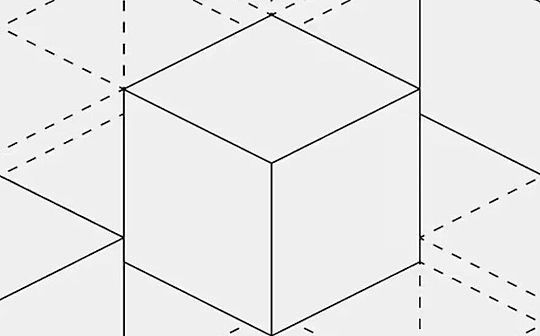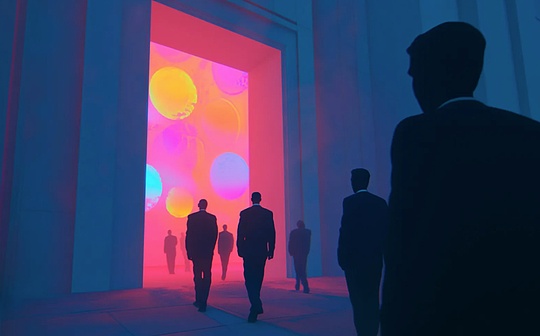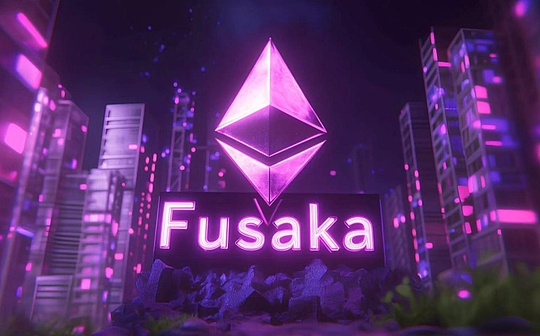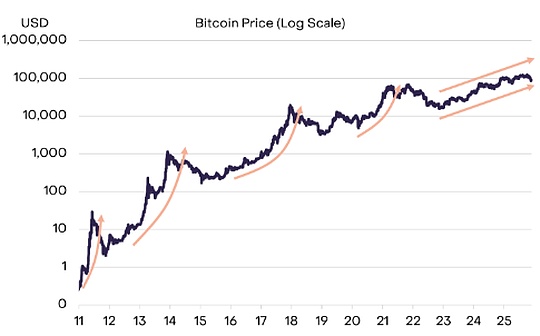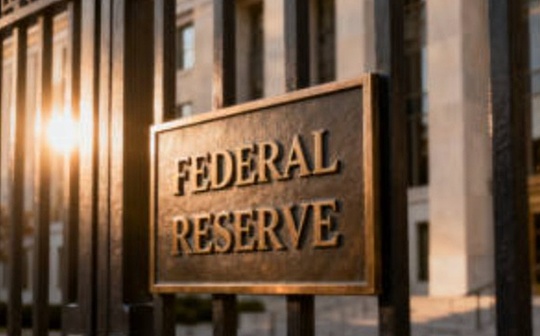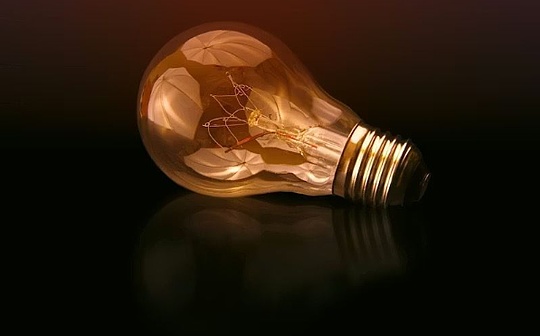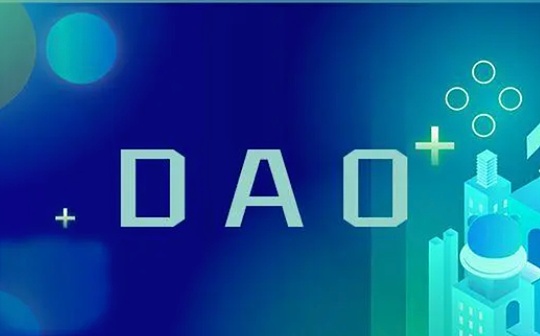
Author: Davide Crapis Source: notion Translation: Shan Oppa, Bitchain Vision
The origins of the Decentralized Autonomous Organization (DAO) can be traced back to key ideas before the birth of Ethereum.In 1996, Nick Szabo proposed the concept of “Smart Contracts”, a self-executing agreement embedded in software that automatically executes and enforces the terms without an intermediary.By designing aContractual obligations are managed by computing logicSzabo laid the theoretical foundation for creating entities that can run independently.These early theoretical frameworks paved the way for the emergence of DAOs and defined their potential as a self-governance organization.
Decentralized Autonomous Corporation (DAC)
In 2013, Vitalik ButerinBitcoin MagazineA series of articles published onDecentralized autonomous companiesconcept.In his article, Buterin defines DAC as a blockchain-based entity and summarizes the following three core principles:
1.Autonomy:Operations are guided by rules coded in smart contracts without ongoing manual intervention.
2.Decentralization:Power and decisions are managed by participants distribution rather than concentrated on a single entity.
3.Transparency:All processes and activities are documented on the public blockchain, ensuring accountability and visibility to all stakeholders.
Buterin’s early research suggests that DAC can be implemented on the Bitcoin blockchain.However, Bitcoin’s scripting language lacks the ability to handle such complex logic, a limitation that suggests the need for an advanced blockchain capable of executing more complex programs.
This is a technical gap in Bitcoin that has enabled the development of Ethereum to be possible—a platform with a Turing complete programming language.Ethereum’s advanced capabilities make the concept of DAC more practical and flexible and eventually develop into the DAO we know today.
From DAC to DAO
The transition from DAC to DAO is not just a brand reshaping, but also an extension of the concept.Although DAC was initially framed as a blockchain company with predefined operating rules,DAO extends this concept to a more flexible governance model.
The main features of DAO include:
•Programmable governance:DAO runs according to rules encoded in smart contracts, ensuring automatic decision making when conditions are met.
•Tokenized voting:Members use governance tokens to make suggestions and vote to achieve decentralized decisions.
•Transparency:Every action and decision is documented on the chain, ensuring accountability and verifiability.
•Global accessibility:DAO is open to global actors and promotes diversity and inclusive membership structures.
•Modular and adaptive design:DAOs can evolve over time, introducing new functions or governance mechanisms to meet the changing needs of the community.
These features enable communities to create customized organizations based on their specific needs, covering everything from venture capital to community resource management.By combining programmable governance with decision-making, DAO on Ethereum overcomes many limitations of the original DAC concept.For example, Aragon provides design tools for modular governance systems, while MolochDAO demonstrates a simplified trust-minimization financing mechanism.
The evolution from DAC to DAO reflects a broader shift in blockchain innovation—from a static, rigid framework to a dynamic system that can adapt to multiple use cases.This also shows how Ethereum’s design addresses the limitations of Bitcoin infrastructure and paves the way for decentralized governance.
Early experiments with The DAO and Ethereum
In 2016, Ethereum launched its first high-profile DAO, simply named “The DAO”.The DAO is designed as a decentralized venture capital fund that allows token holders to propose and vote on projects funded.The DAO raised more than $150 million in ETH in a short period of time, a figure that became one of the largest crowdfunding events in history at the time.
However, The DAO exposed key vulnerabilities in early DAO implementations.The reentrancy bug in its code was maliciously exploited, resulting in the stolen $60 million in ETH.This incident sparked a fierce debate within the Ethereum community:
•The party that supports hard forksIt advocates the recovery of stolen funds by rolling back the blockchain, emphasizing the importance of community trust.
•Opponents who insist on “code is law”Warnings say that modifying the blockchain will undermine its immutable and censorship-resistant properties.
Finally, the Ethereum community implemented a hard fork, splitting Ethereum into two chains:Ethereum (ETH), the stolen funds were restored; andEthereum Classic (ETC), retaining unmodified historical records.This decision highlights the challenge of balancing immutability and practical governance in a decentralized system.
Evolution of DAO
After The DAO collapsed, the Ethereum ecosystem focused on improving the security and functionality of DAO.At this stage, some important advances include:
1.Sign up for more wallets and Gnosis Safe:
Signing more wallets has become the basic tool to improve DAO security.This approach greatly reduces vulnerabilities caused by single point failure.For example, Gnosis Safe provides a user-friendly multi-signment wallet management platform that allows DAOs to implement tiered approvals in key decisions such as fund allocation or contract upgrades.These security measures ensure that a single malicious act or error does not endanger the entire organization.
2.Aragon and MolochDAO:
•AragonA comprehensive framework was developed for designing and deploying DAOs, providing modular governance tools that allow the community to customize decision-making processes as needed.Its capabilities include on-chain voting and role-based permission management, enabling DAOs to adapt to a variety of use cases.
•MolochDAOA minimalist approach has been adopted, focusing on financing public products within the Ethereum ecosystem.One of its core innovations is the “ragequit” mechanism, which allows members to withdraw and withdraw their due proportion of their funds when they disagree with collective decisions.This mechanism enhances trust and reduces disputes.
Diversified applications of DAO
By 2020, DAO has evolved to meet a wide variety of use cases:
Protocol DAO: Enable token holders to participate in protocol updates and resource allocation, for example:
-
MakerDAO manages the Maker protocol, which supports DAI stablecoins.Token holders can vote on key parameters such as collateral type and risk model to ensure that the protocol remains stable and effective.
-
Uniswap DAO manages Uniswap decentralized exchanges, allowing token holders to propose and vote on protocol upgrades, liquidity mining plans and fee adjustments.Uniswap’s success proves that DAO can manage large financial infrastructure.
Social DAO: Organizations like Friends With Benefits (FWB) are committed to fostering communities around shared value and resources, Seed Club helps creators and communities launch tokenized communities, and Cabin DAO creates decentralized cohabitation spaces and supports digital nomads.
Invest in DAO: Organizations such as The LAO allow members to jointly invest in venture capital while retaining collective governance rights.Other examples include MetaCartel Ventures, a organization that focuses on funding early-stage decentralized applications (dApps) and blockchain-based projects.Another famous example is FlamingoDAO, which focuses on acquiring and curating artworks as part of its investment strategy.
The latest innovations in DAO design and challenges
By 2024, the DAO ecosystem has grown significantly, with new tools and ideas driving its development.Key trends include:
1.AI Enhanced Governance:
Some organizations (such as ai16z) propose integrating artificial intelligence (AI) into DAO decision-making processes, thereby improving adaptability and efficiency while maintaining transparency.
2.Public Products DAO:
Projects such as Gitcoin and Optimism’s “Backtracking Public Products Funding” focus on supporting open source infrastructure and community-driven programs.
3.DAO-as-a-Service platform:
Services like daos.fun simplify the creation and management of DAOs, making decentralized governance more accessible to a wider audience.
Despite the great potential DAO has shown, it faces some ongoing challenges:
•Scalability: Current on-chain voting systems are usually slow and costly, limiting their availability in large-scale organizations.
•Collaborative Complexity: As the DAO scales up, reaching consensus among different participants becomes more difficult.
•Regulatory uncertainty: The legal status of DAO and its participants is unclear, which presents potential risks to members.
Addressing these challenges requires continuous innovation in governance models, legal frameworks and technical infrastructure.From Szabo’s vision of smart contracts to experiments on Ethereum to broader practices, DAO is gradually evolving into a transformative collective decision-making and organizational tool.As they continue to mature, DAOs are expected to redefine how individuals and communities work together in the digital age.
DAO of humans and AI
The concept of DAO is evolving into a hybrid model that includes humans and artificial intelligence (AI).These organizations are expected to address some of the limitations of traditional DAOs while opening up new areas of governance and innovation.
The structure of hybrid DAO
Hybrid DAO combines human actors and AI agents and is a cutting-edge evolution in decentralized governance.These organizations aim to leverage the complementary advantages of human creativity and AI efficiency to build adaptable, scalable, and resilient structures.By integrating human intuition with computational accuracy, hybrid DAO can not only solve existing problems, but also explore new possibilities for decentralized collaboration.
Hybrid DAOs can be structured in the following ways:
•Stratified decision-making: Human actors are responsible for high-level strategic and governance decisions, while AI agents perform operational tasks, analyze data, and provide recommendations.
•AI full-time role: AI models can act as consultants or mediators, process complex data sets to guide collective decisions, or perform automated tasks such as compliance monitoring and resource optimization allocation.
•Consensus Agreement: Hybrid DAOs can leverage AI to promote consensus by reducing information overload for participants by analyzing proposals and presenting brief arguments that support or object to.
Hybrid DAOs can solve the key challenges faced by traditional DAOs.in particular:
-
Scalability:AI systems can automate repetitive tasks, reduce bottlenecks caused by human decision-making processes alone, and speed up operations.For example, in a DAO that manages a global grant program, AI can automatically classify and prioritize grant proposals based on predefined criteria.By presenting a list of proposal rankings with key insights, AI enables DAOs to process a higher number of submissions while maintaining efficiency and fairness.
-
coordination:AI can serve as a fair coordinator to resolve disputes, coordinate member interests and ensure fair vote outcomes.For example, in DAOs that manage community-driven projects, AI can analyze historical voting patterns and project results to recommend strategies that minimize group thinking and ensure different perspectives are represented.
-
Safety:Smart contracts enhanced by AI can detect and mitigate potential vulnerabilities in real time and improve resistance to malicious attacks.For example, an AI system integrated into a DAO that manages the decentralized finance (DeFi) protocol can monitor abnormal patterns in transaction data to indicate possible vulnerabilities.AI can then trigger automatic protection measures such as freezing a specific contract or notifying an administrator to prevent further damage while being able to respond quickly to threats.
Application of Artificial Intelligence Governance and Alignment
Hybrid DAO provides a promising framework for managing the governance and alignment of advanced AI systems.For example:
-
Ethical Supervision:Hybrid DAOs can enforce ethical AI use through transparent, community-driven governance, ensuring that AI evolution is in line with social values.
-
Funding Alignment Program:DAOs can pool resources to support AI alignment research and inspire open collaboration and accountability among developers.
-
Adaptive governance model:By integrating AI agents that enable real-time learning and feedback, hybrid DAOs can dynamically adjust governance rules to adapt to emerging challenges in AI ethics and security.
-
Decision-making experiment:Hybrid DAOs can conduct experiments that allow AI to compete with human decision makers in tasks, such as funding allocation, enabling data-driven comparisons to evaluate their effectiveness in achieving expected results, such as retrospective funding success.
By combining the advantages of decentralized governance and the capabilities of artificial intelligence, hybrid DAOs can play a key role in shaping the future of technology and humanity in harmony.
DAO of humans and AI
The concept of DAO is evolving, including a hybrid model of humans and AI collaborating within a decentralized framework.These organizations can address some of the current limitations of DAO while opening up new areas for innovation and governance.
Building a hybrid DAO
Hybrid DAOs combine human actors and AI agents, representing the cutting-edge development of decentralized governance.These organizations aim to leverage the complementary advantages of human creativity and AI efficiency to build structures that are adaptable, scalable and resilient.By leveraging human intuition and computational accuracy, hybrid DAOs can address existing limitations while exploring new possibilities for decentralized collaboration.They can be constructed in a variety of ways:
-
Hierarchical decision-making:Human actors are responsible for advanced strategic and governance decisions, while AI agents perform operational tasks, analyze data, and provide recommendations.
-
Special roles of AI:AI models can act as consultants or mediators, process complex data sets to guide collective decisions, or perform automated tasks such as monitoring compliance and optimizing resource allocation.
-
Consensus Agreement:Hybrid DAOs can leverage AI to promote consensus by analyzing proposals and summarizing arguments that support and oppose, thereby reducing participant information overload.
Challenges that hybrid DAOs can solve
Hybrid DAOs can solve the key challenges faced by traditional DAOs.in particular:
-
Scalability:AI systems can automate repetitive tasks, reduce bottlenecks caused by human decision-making processes alone, and speed up operations.For example, in a DAO that manages a global grant program, AI can automatically classify and prioritize grant proposals based on predefined criteria.By presenting a list of proposal rankings with key insights, AI enables DAOs to process a higher number of submissions while maintaining efficiency and fairness.
-
coordination:AI can act as a fair coordinator to resolve disputes, coordinate member interests, and ensure fair vote outcomes.For example, in DAOs that manage community-driven projects, AI can analyze historical voting patterns and project results to recommend strategies that minimize group thinking and ensure different perspectives are represented.
-
Safety:Smart contracts enhanced by AI can detect and mitigate potential vulnerabilities in real time and improve resistance to malicious attacks.For example, an AI system integrated into a DAO that manages the decentralized finance (DeFi) protocol can monitor abnormal patterns in transaction data to indicate possible vulnerabilities.AI can then trigger automatic protection measures such as freezing a specific contract or notifying an administrator to prevent further damage while being able to respond quickly to threats.
-
Engagement:Participation in governance remains a major challenge for DAOs, with low participation and lack of incentives for well-thought-out decision making.AI can help solve this problem by analyzing voter behavior and recommending incentive structures, such as rewarding representatives and voters who contribute to successful outcomes.AI can also help members make smarter decisions by providing data-driven insights that integrate complex strategies, short-term and long-term considerations.
-
transparency:Transparency on power distribution, voting history and governance trends is crucial to the success of DAOs.Tools such as governance dashboards can be enhanced with AI, acting as neutral observers, analyzing and visualizing decision-making patterns.AI can also help build mechanisms to reward good decisions and enable voters to share the benefits of network success, not just token value.
These are just examples of the potential of hybrid DAOs.With the continuous advancement of AI technology and the continuous development of the DAO governance framework, we can expect to see innovation and evolution of these organizations in the coming years.

